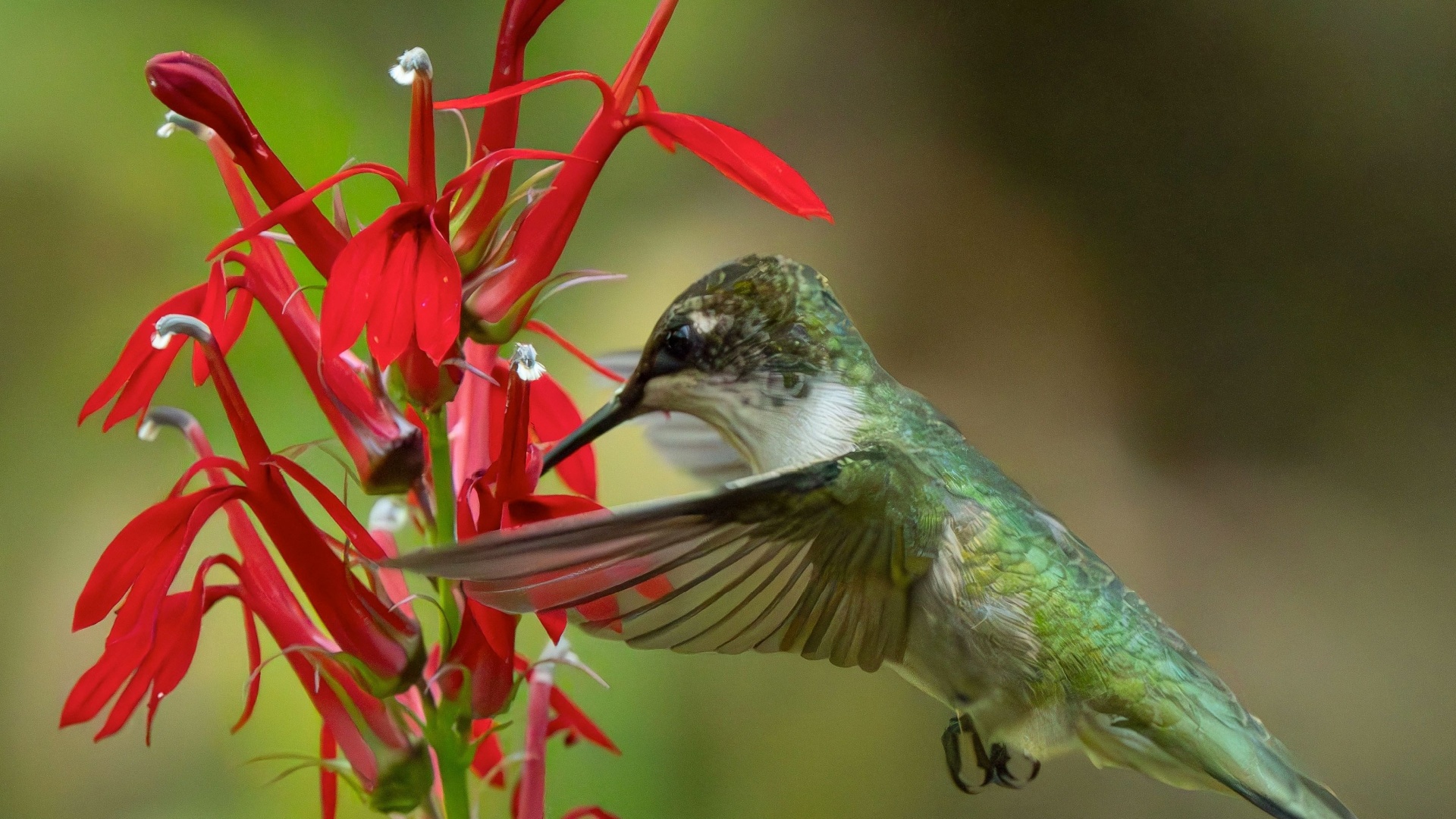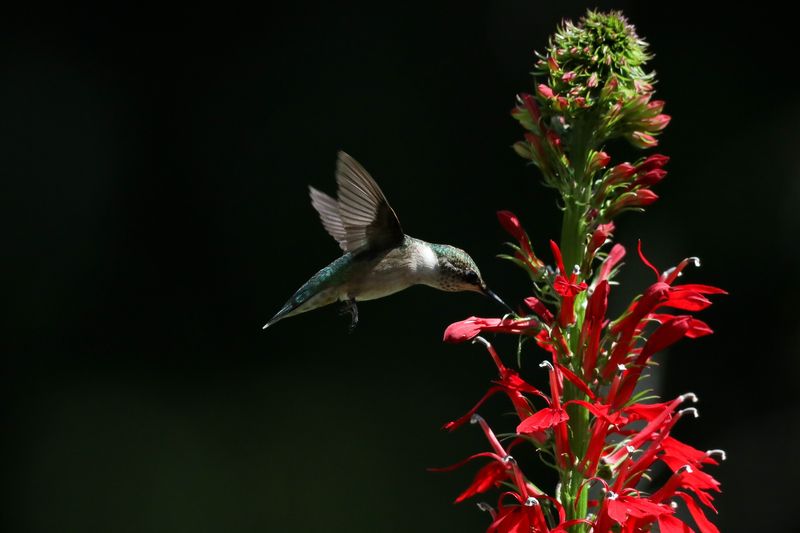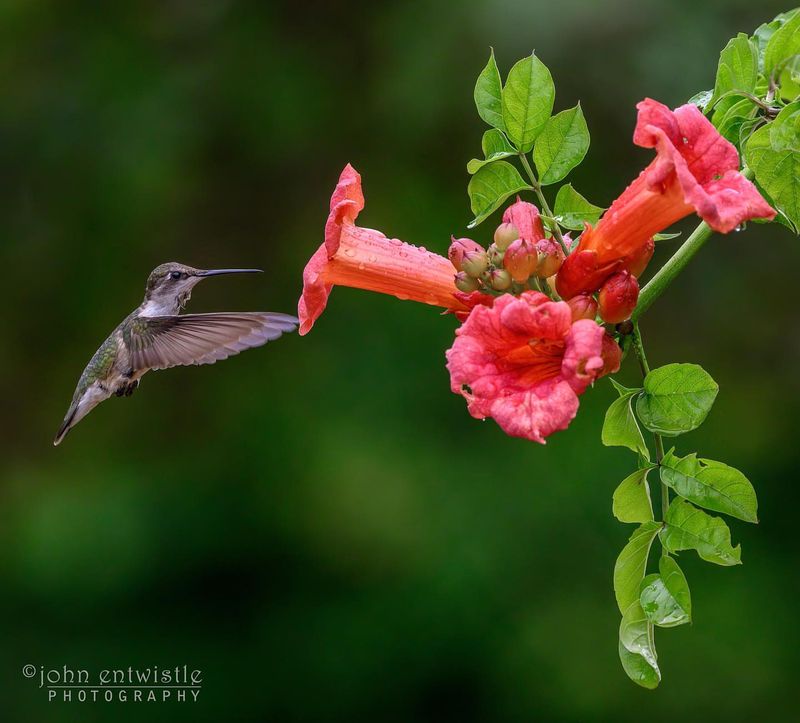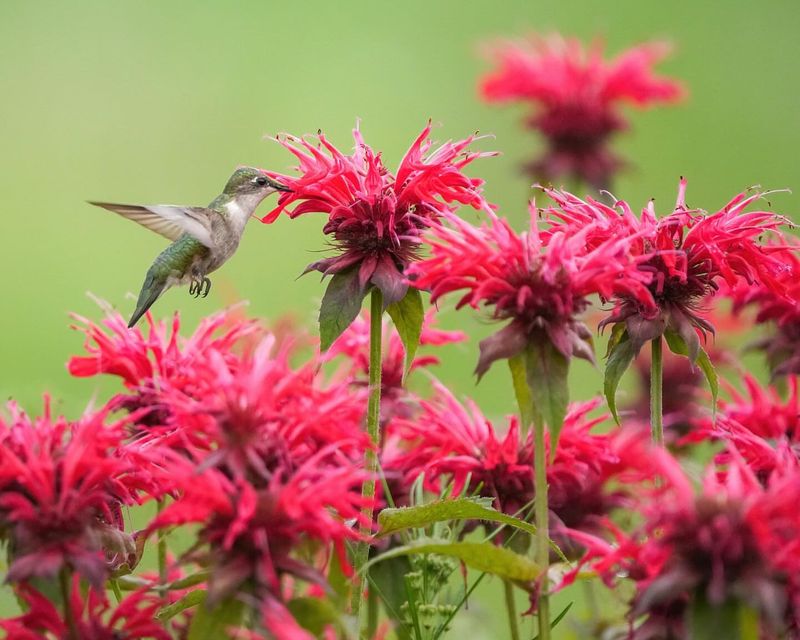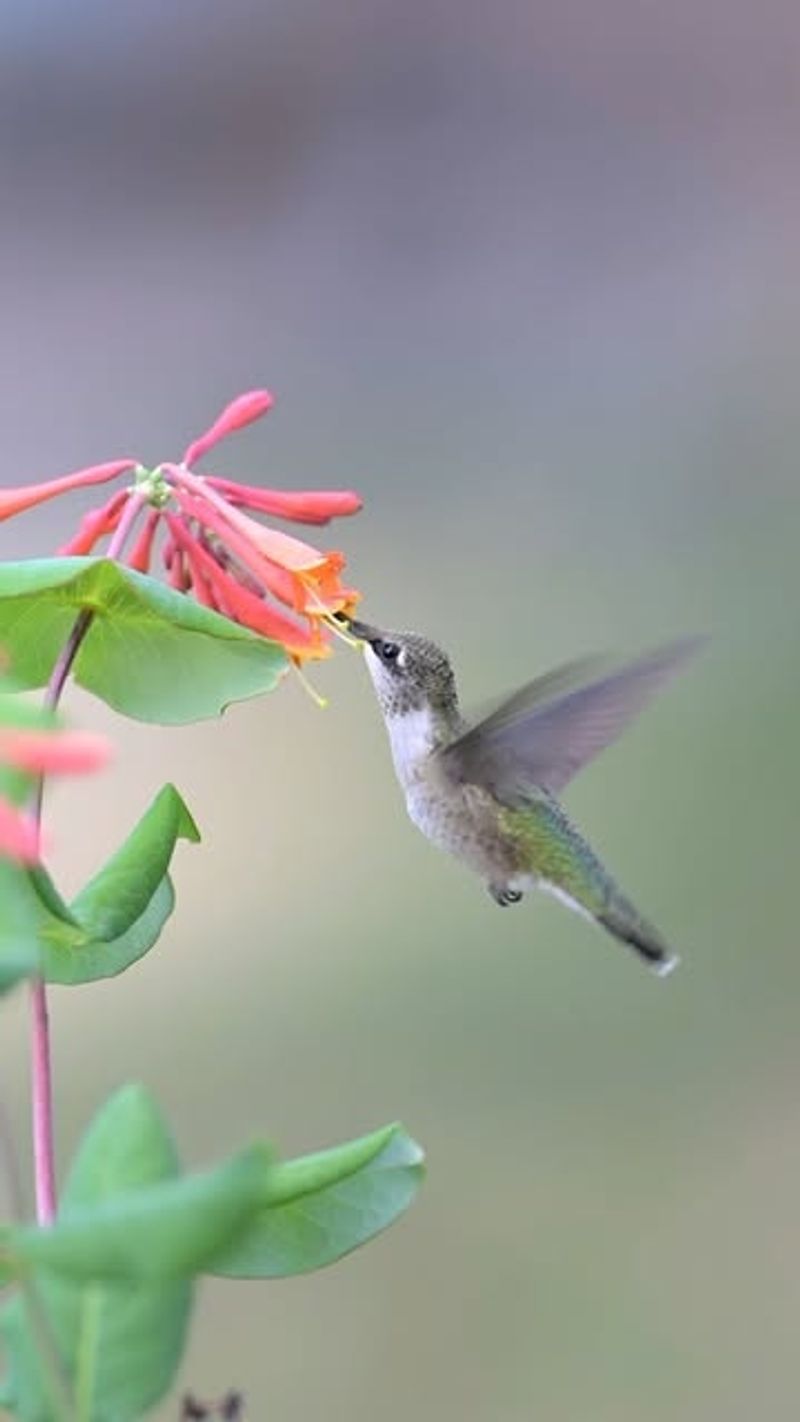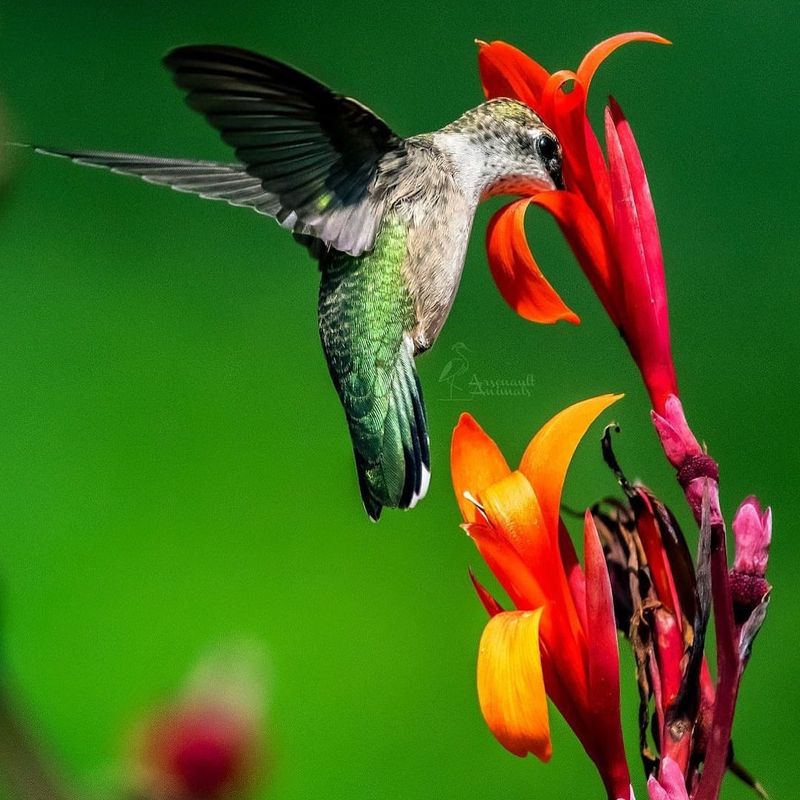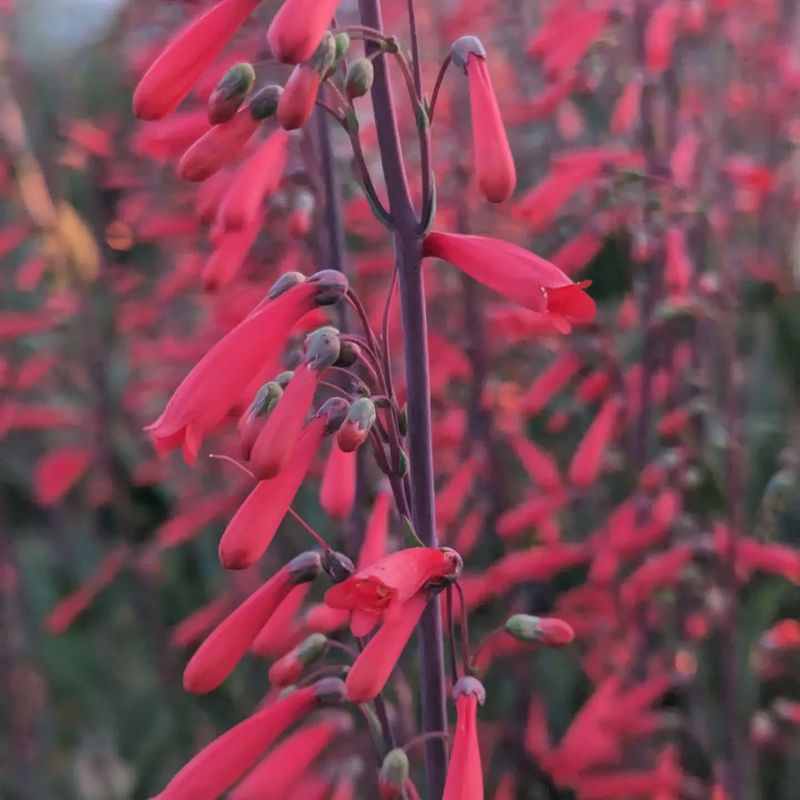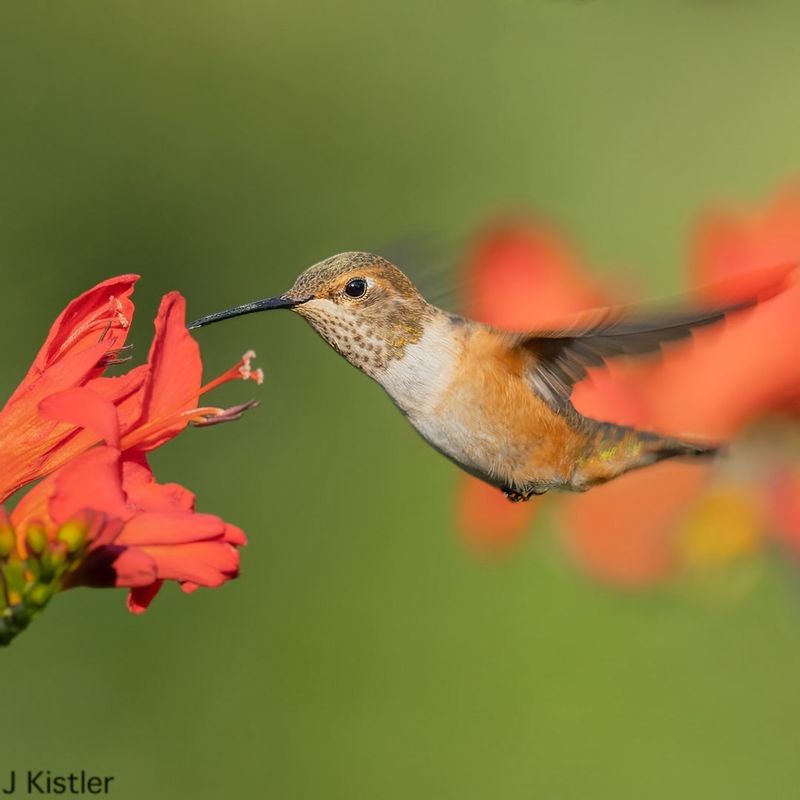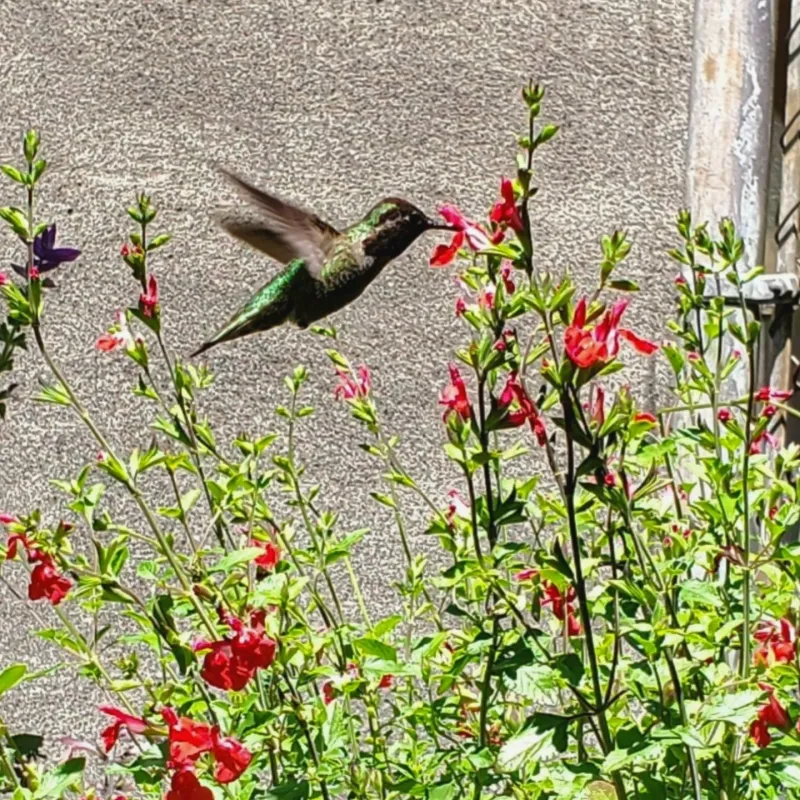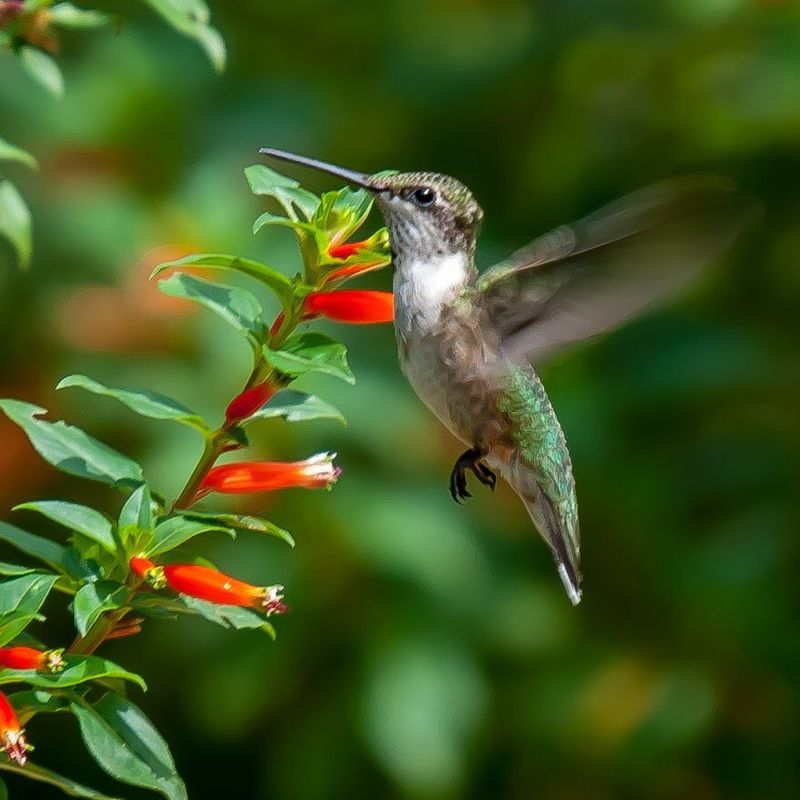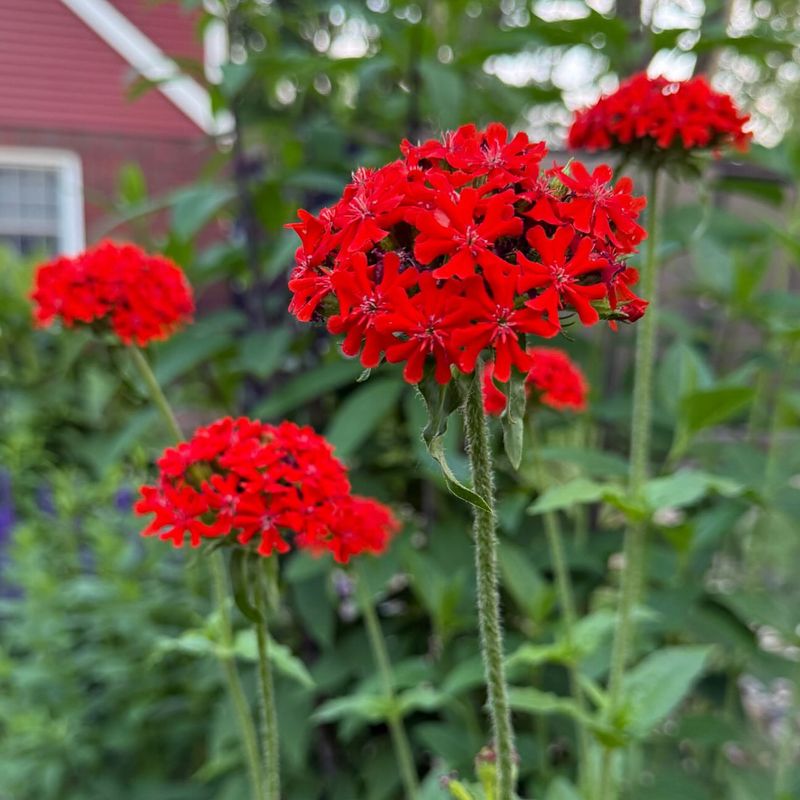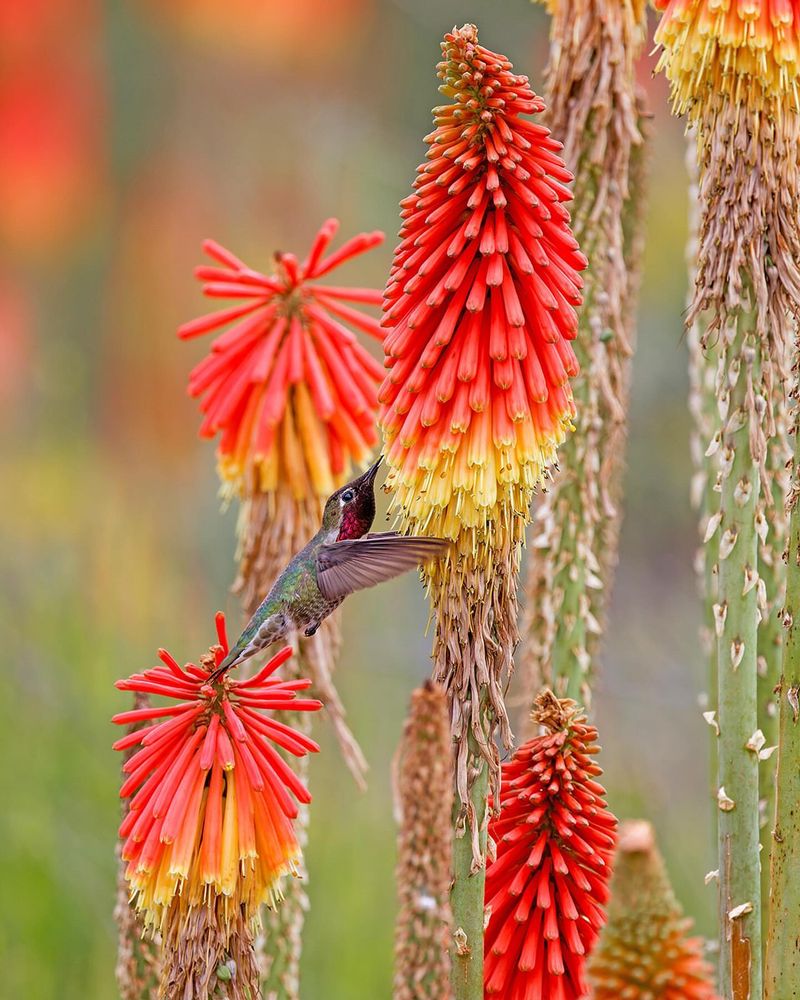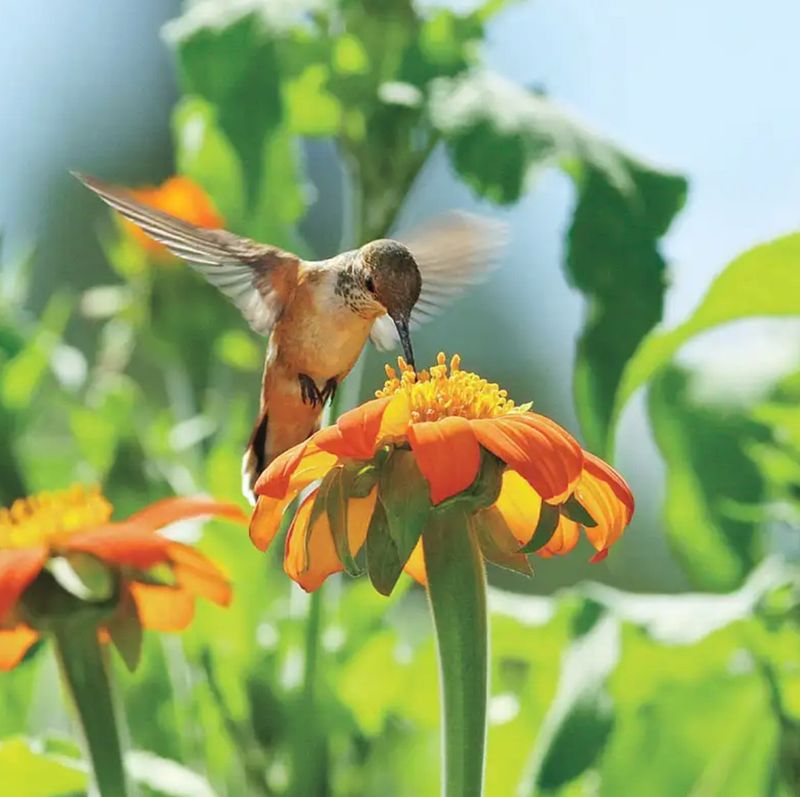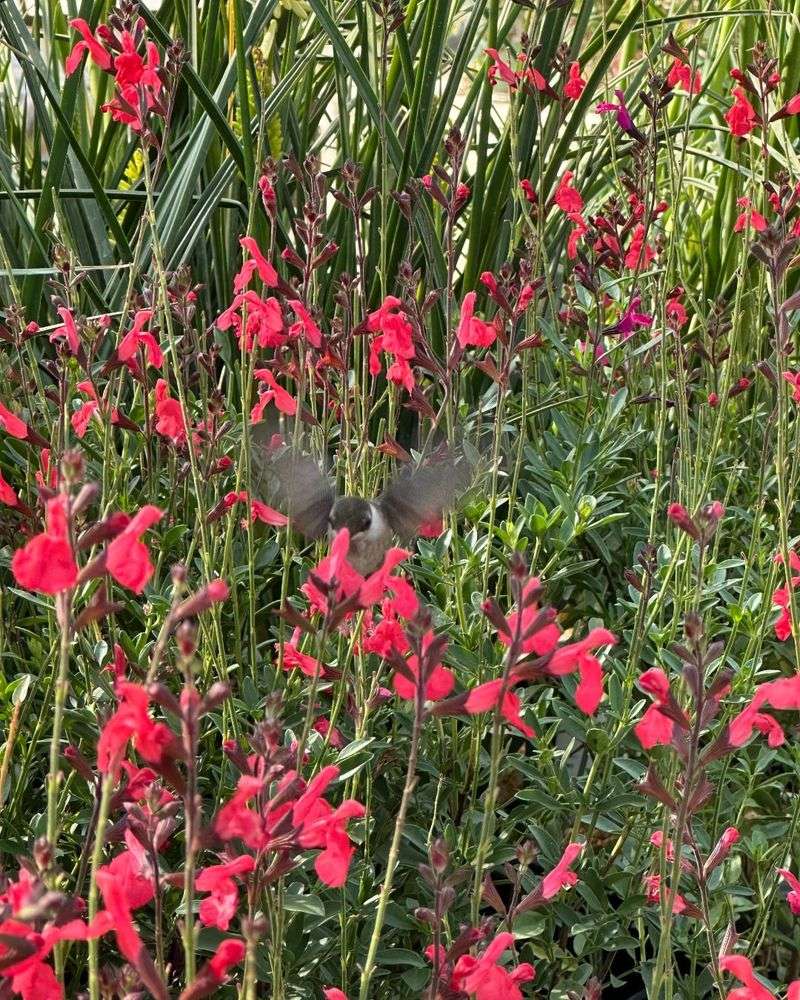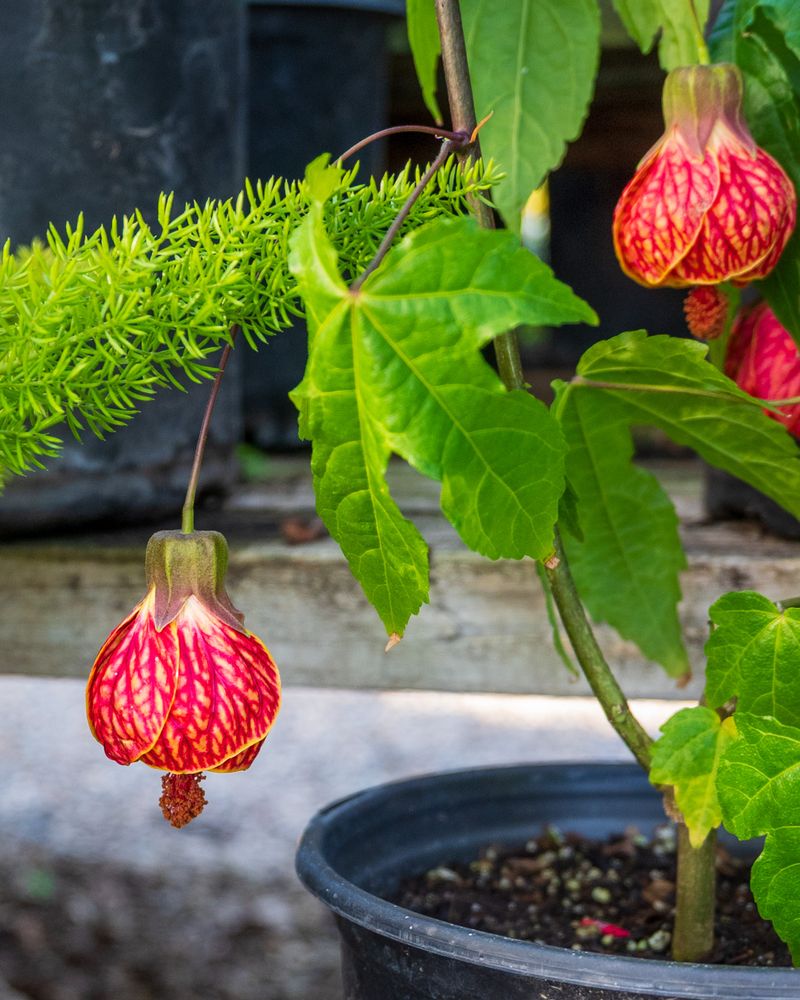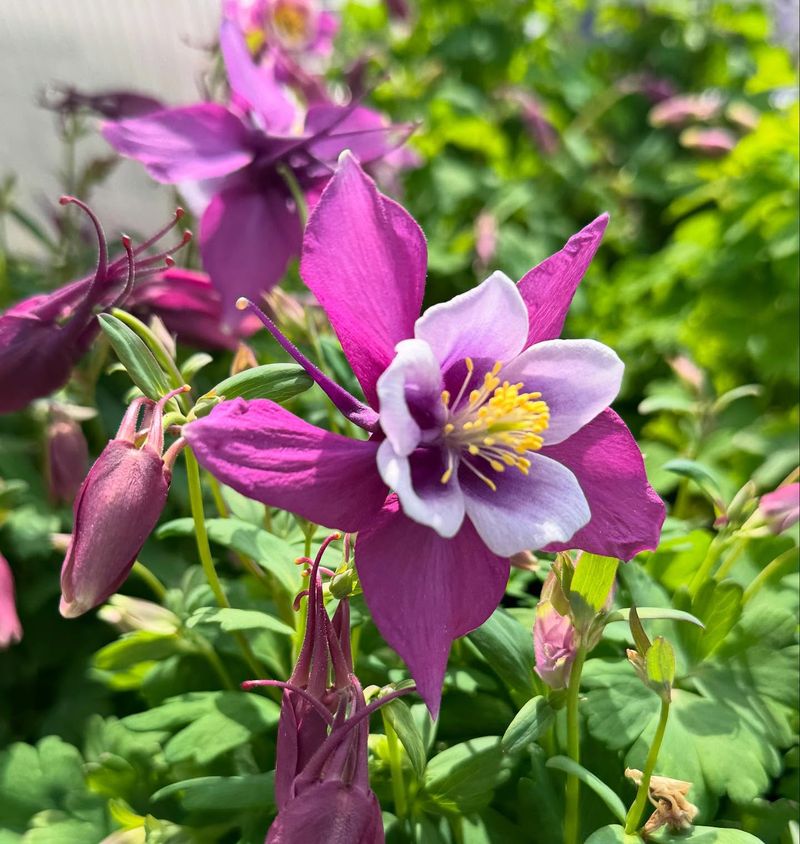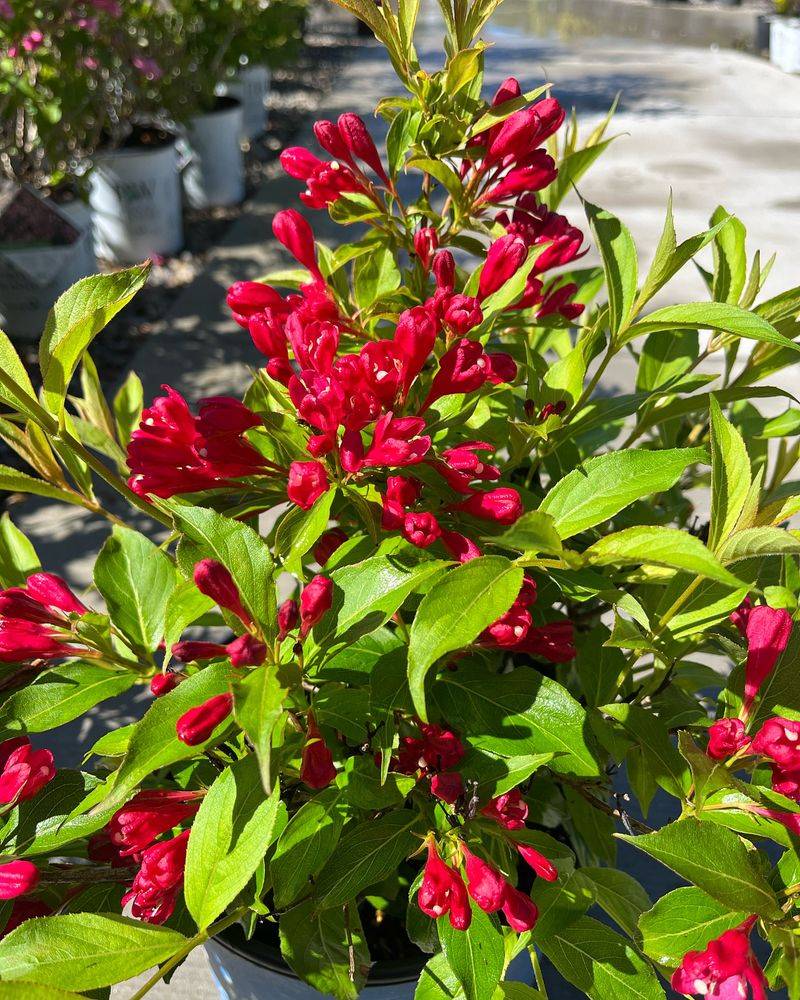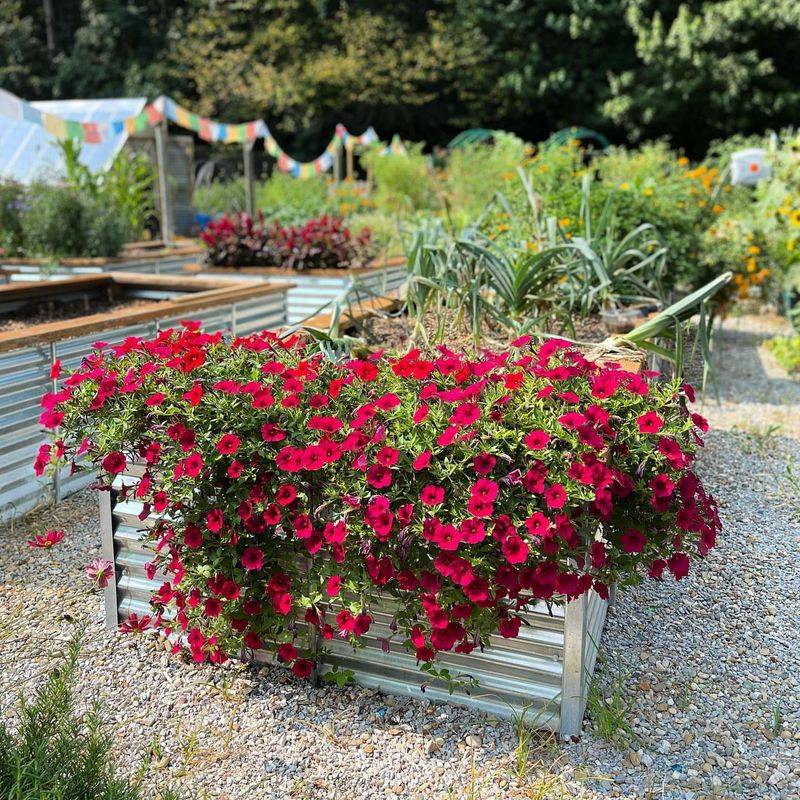Want to fill your yard with color and winged visitors? Red and orange blooms are like neon signs for hummingbirds—and your garden can become their favorite stop.
These 18 stunning flowers don’t just light up your landscape, they attract hummingbirds with bold colors and rich nectar. Get ready to turn your garden into a buzzing, fluttering haven of life.
1. Cardinal Flower
Standing tall with brilliant scarlet spikes, Cardinal Flower creates a dramatic vertical accent in partly shaded garden spots. Native to North American wetlands, this perennial beauty blooms from midsummer through fall.
Hummingbirds simply can’t resist its tubular flowers filled with abundant nectar. The plant thrives in moist soil conditions and can reach up to 4 feet tall, making it perfect for the back of borders or along stream edges.
2. Trumpet Vine
Nicknamed ‘hummingbird vine’ for good reason, this vigorous climber produces clusters of trumpet-shaped orange-red blooms that hummingbirds find irresistible. The flowers’ long, tubular shape perfectly accommodates their specialized bills and tongues.
Growing up to 40 feet, Trumpet Vine needs strong support and regular pruning to prevent it from taking over. Plant it near a sturdy fence or pergola where you can enjoy watching hummingbirds hover as they feed.
3. Bee Balm
With shaggy, crown-like flowers in vibrant scarlet, Bee Balm creates a fireworks display in summer gardens. This native perennial spreads to form impressive clumps that become hummingbird magnets.
Beyond attracting wildlife, the aromatic foliage offers a delightful minty scent when brushed against. Bee Balm performs best in full sun to partial shade and prefers consistently moist soil. Deadheading spent blooms encourages continued flowering throughout the season.
4. Coral Honeysuckle
Unlike its invasive Japanese cousin, native Coral Honeysuckle offers wildlife benefits without taking over your garden. The tubular coral-red flowers appear in clusters against blue-green foliage, creating a striking combination.
Hummingbirds particularly love this vine’s nectar-rich blooms that appear from spring through fall. As a bonus, you’ll enjoy the light, sweet fragrance that’s most noticeable in the evening hours. Train it on a trellis or fence for a beautiful living screen.
5. Canna Lily
Bringing tropical flair to gardens, Canna Lilies produce bold orange or red blooms atop dramatic paddle-shaped foliage. These showstoppers can reach impressive heights of 4-6 feet, creating a stunning backdrop for other plantings.
Hummingbirds dart between the clustered flowers throughout summer and into fall. For best results, plant Cannas in full sun and keep the soil consistently moist. In colder regions, dig up rhizomes after the first frost and store them indoors until spring.
6. Penstemon
Often called beardtongue for the fuzzy stamen that protrudes from each bloom, red Penstemon varieties offer tubular flowers perfectly shaped for hummingbird bills. These native perennials bloom prolifically in early summer, creating a riot of color.
Drought-tolerant once established, Penstemons thrive in sunny spots with well-drained soil. Their upright growth habit makes them excellent additions to perennial borders or wildflower gardens. Look for varieties like ‘Firebird’ or ‘Scarlet Bugler’ for the most vivid hummingbird-attracting colors.
7. Crocosmia
Arching stems of fiery orange-red blooms make Crocosmia a standout in summer gardens. The tubular flowers open sequentially along the stems, providing nectar for hummingbirds over several weeks.
Growing from corms, Crocosmia multiplies readily in favorable conditions, creating impressive clumps over time. The sword-like foliage adds textural interest even when the plants aren’t flowering. ‘Lucifer’ is a popular variety with especially vibrant red blooms that hummingbirds find irresistible.
8. Salvia ‘Hot Lips’
Featuring unique bicolor blooms of white and red that resemble tiny kissing lips, this salvia variety adds whimsy to gardens while attracting hummingbirds in droves. The long-blooming perennial flowers from early summer until frost.
Heat and drought tolerant once established, ‘Hot Lips’ requires minimal maintenance besides occasional trimming to keep it bushy. The aromatic foliage deters deer and rabbits, making this plant perfect for problem areas where other flowers get munched.
9. Cuphea
Commonly called cigar plant or firecracker plant, Cuphea produces tiny tubular flowers in shades of red and orange that resemble miniature firecrackers. These non-stop bloomers flower from spring until frost, providing a reliable nectar source.
Compact and well-behaved in gardens, Cuphea works beautifully in containers or as a front-of-border planting. Though technically perennial only in warm climates, many gardeners grow it as an annual for its exceptional hummingbird appeal and easy-care nature.
10. Cypress Vine
Delicate star-shaped scarlet flowers contrast beautifully against feathery foliage on this fast-growing annual vine. Cypress Vine can climb 10-15 feet in a single season, quickly covering trellises or fences with its airy presence.
Hummingbirds flock to the bright blooms that appear in abundance from midsummer until frost. For best results, soak seeds overnight before planting or nick the hard seed coat to improve germination. The vine self-seeds readily, often returning year after year in warmer climates.
11. Maltese Cross
Vivid scarlet flowers shaped like tiny Maltese crosses give this perennial its distinctive name. The fiery blooms appear in dense clusters atop sturdy stems in early summer, creating a bold statement in the garden.
Easy to grow and long-lived, Maltese Cross thrives in average soil and full sun. Hummingbirds zoom straight to these nectar-rich flowers, often returning multiple times throughout the day. After the main bloom period, cut plants back by half to encourage a second flush of flowers.
12. Red Hot Poker
Torch-like flower spikes in fiery orange-red gradients make Red Hot Poker an unmistakable garden standout. The tubular florets open from bottom to top, providing weeks of color and nectar for hungry hummingbirds.
Drought-tolerant and deer-resistant, these perennials form clumps of grass-like foliage that remains evergreen in milder climates. Modern varieties come in compact sizes perfect for smaller gardens while maintaining the dramatic flower display that makes hummingbirds swoon.
13. Mexican Sunflower
Towering stems topped with vibrant orange-red daisy-like flowers make Mexican Sunflower a dramatic addition to summer gardens. This fast-growing annual can reach 6 feet tall, creating a colorful backdrop that hummingbirds can’t resist.
Heat-loving and drought-tolerant, Mexican Sunflower blooms prolifically from midsummer until frost without deadheading. The velvety stems and leaves add textural interest, while the flowers attract not only hummingbirds but also butterflies and beneficial insects to your garden.
14. Autumn Sage
Native to the southwestern United States, Autumn Sage defies its name by blooming from spring through fall with only brief pauses. The tubular flowers come in vibrant red shades that serve as beacons to passing hummingbirds.
Extremely drought-tolerant once established, this woody perennial thrives in hot, sunny locations with well-drained soil. Light pruning after each bloom cycle encourages more flowers. The aromatic foliage releases a pleasant scent when brushed against, adding sensory appeal to its wildlife benefits.
15. Flowering Maple
Despite its name, Flowering Maple is actually an Abutilon, prized for its continuous display of pendant, bell-shaped blooms in orange or red hues. The maple-like leaves provide an attractive backdrop for the dangling flowers that hummingbirds adore.
Perfect for containers or protected garden spots, this tender perennial can bloom year-round in mild climates. In colder areas, bring potted plants indoors for winter where they’ll continue flowering near a sunny window, providing hummingbird appeal when returned outdoors in spring.
16. Columbine
With distinctive spurred flowers in red and orange hues, native Columbine varieties offer some of spring’s earliest nectar sources for returning hummingbirds. The unique backward-pointing spurs contain sweet nectar that’s perfectly accessible to hummingbird bills.
Self-seeding readily, Columbines create naturalized patches that return year after year. The delicate, fan-shaped foliage emerges early and looks attractive even before flowering begins. Plant in dappled shade or morning sun locations for best performance in most regions.
17. Weigela ‘Red Prince’
Trumpet-shaped crimson flowers blanket this deciduous shrub in late spring, creating a feast for hummingbirds. ‘Red Prince’ Weigela often produces a second, lighter bloom in late summer, extending the feeding season.
Growing 5-6 feet tall and wide at maturity, this low-maintenance shrub forms a naturally rounded shape requiring little pruning. The flowers contrast beautifully against dark green foliage. Plant Weigela where you can observe it from windows to enjoy the hummingbird visitors it attracts.
18. Petunia ‘Tidal Wave Red’
Cascades of velvety red trumpet-shaped flowers make this vigorous petunia variety a hummingbird magnet all summer long. Unlike typical bedding petunias, ‘Tidal Wave’ creates impressive mounds up to 3 feet tall and wide when given support.
Perfect for hanging baskets, window boxes or garden beds, these versatile annuals bloom continuously from spring until frost. Regular deadheading isn’t necessary, as new blooms quickly replace spent ones. For maximum flower production, fertilize every two weeks and provide at least six hours of sunlight daily.

